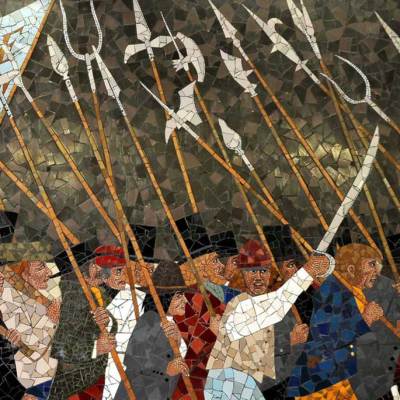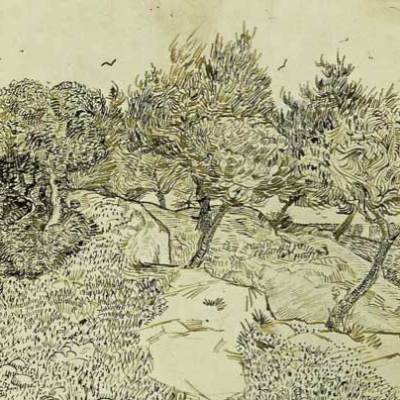The third British Ceramics Biennial spans several venues, but the gloriously light-filled space at the original Spode Factory in Stoke Town remains its beating heart.
This year the biennial provides a mix of installations, products, manufacturing collaborations, on-site production projects, films and an educational element with the ambition of seeing everybody leave with ‘clay under their fingernails’.
Clare Twomey’s striking Made in China installation demands attention on entry to the main space (the China Hall) at the Spode factory. Hiding within one of 80 large red vessels manufactured in Jingdezhen, China, is a lone hand-painted piece from Royal Crown Derby. Within moments of entering you are seeking out UK production. It’s an interesting opening gambit from the biennial.
Outside the China Hall in the adjacent maze of spaces, Phoebe Cummings’ After the Death of the Bear presents a CSI-style polythene curtain that reveals the silhouette of a forensic scene beyond. The death of the bear was a popular 19th-century tableware pattern depicting a bear surrounded by British hunters in India. Cummings’s interpretation is an eerie raw clay landscape of palm trees and vegetation in which the bear is conspicuously absent.
Loss and absence is also a theme in Emerging Line – the collective work of a group of nine ceramists from the Crafts Council‘s Hothouse programme. Each has created work in response to the factory space, its histories and the people that worked there. Miche Follano’s line of 367 small delicate vessels crosses a dusty floor and represents the number of workers laid off when the factory closed in 2008. Keith Varney’s subtle bone china installation references the huge bottle kilns that used to occupy the site until the 1960s.
Topologies of the Obsolete: Vociferous Void is an international artistic research project with ceramics big-gun Neil Brownsword at the helm. Interventions by 40 makers reveal themselves in a number of deserted office buildings close to the factory. They include a fictional interview with the Spode Factory building itself and the chance to watch ‘living national treasures’ in the form of former china painters, at work.
Moving on from glories past, the FRESH showcase presents work by 33 makers all working within a year of their graduation. The introduction soberly reminds us that there are only two institutions in the UK that offer a dedicated ceramics programme. A certain amount of solace comes in the high levels of skill and creativity evident in the display, which includes work by Lisa Maria Svensk, Mella Shaw, Taz Pollard and Ragnhild Marstad.
The AWARD showcase at the Potteries Museums and Art Gallery is a selected group of established makers, one of whom will walk away with the prestigious 2013 Award and £10,000 come 18 October. Nao Matsunaga, Conor Wilson, Andrea Walsh, James Rigler and Christie Brown all attest to the quality and the depth of the competition.
Founders Jeremy Theophilus and Barney Hare Duke both spoke passionately on the opening night about how the biennial provides a much-needed boost to the local economy and a challenge to the perception of a moribund ceramics industry in Stoke-on-Trent. And in thanking Alan, the long-standing Spode Factory security guard, they received one of the evening’s heartiest cheers.
Alan’s part that night in wheeling off two performance artists covered in clay slip was probably one of the stranger things he has ever done at work but his enjoyment was obvious. And it somehow represents how the biennial is carving a very special niche for itself: presenting ceramics in its widest context; working with local people, businesses and industry in harnessing the power of the past; and not being afraid to take risks.
The British Ceramics Biennial is on in Stoke-on-Trent until 10 November 2013.





